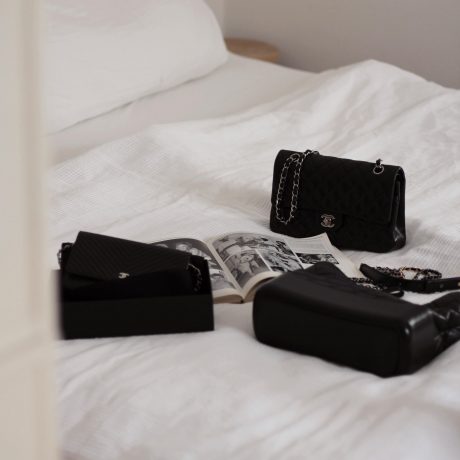Awesome girls
Why pink ain't a girl's colour.
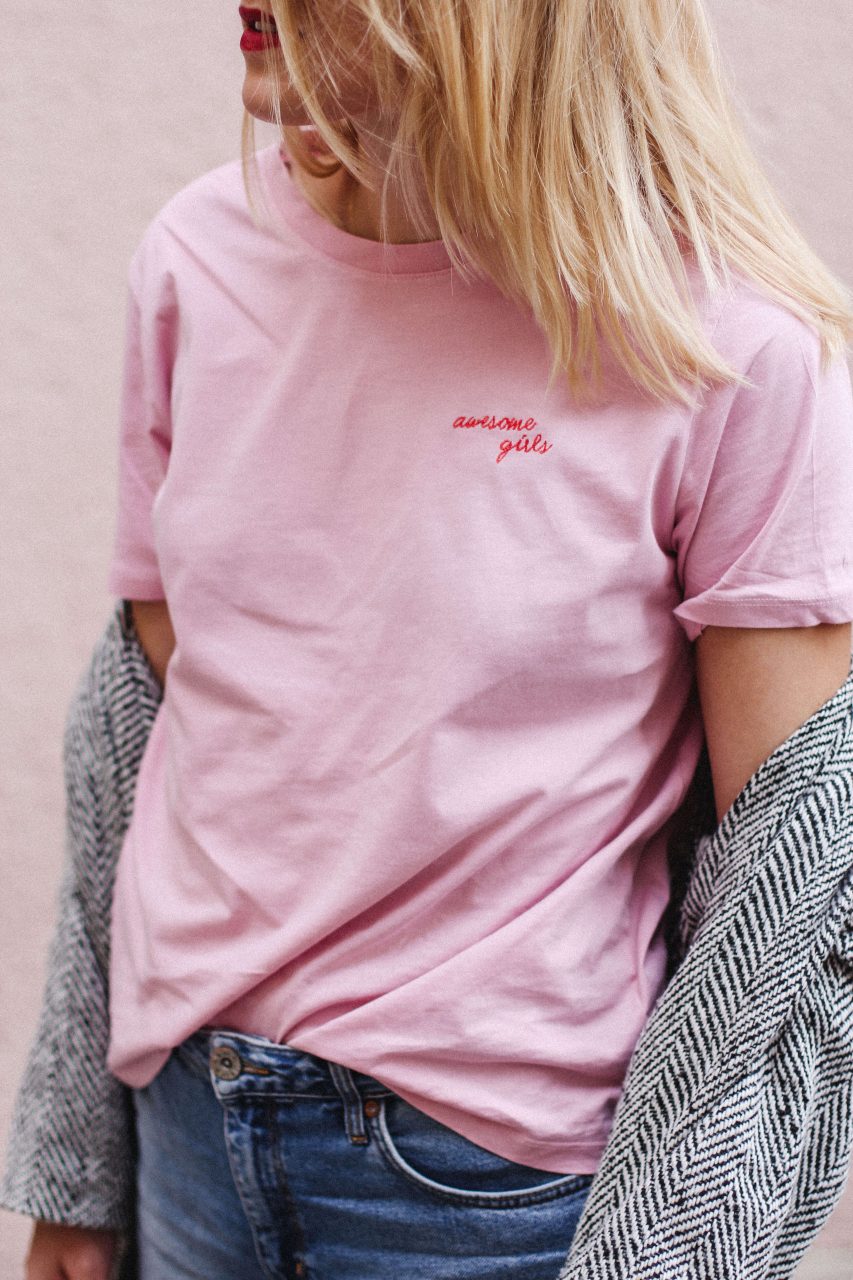
Wer hat eigentlich festgelegt, dass Rosa (oder Pink) eine Mädchenfarbe ist?
Ich möchte hier keine Feminismusdebatte oder etwas Gegensätzliches anfangen, aber ich habe so meine Schwierigkeiten mit der – wie mir scheint – allgemeinen Auffassung zur Farbe Rosa. Der Aufhänger dafür ist natürlich mein Shirt mit dem Aufdruck „Awesome girls“.
Wie man unschwer erkennen kann, gehört Rosa zu meinen absoluten Lieblingsfarben – in all seinen unendlichen Schattierungen. Nur mädchenhaft finde ich die Farbe nicht. Sicher, treibt man es damit auf die Spitze, kann sie das sein. Sie kann aber auch ganz anders.
Abgesehen von meinem persönlichen Empfinden ist Rosa auch geschichtlich gesehen keine „Mädchenfarbe“:
In den 1920er-Jahren vermarkteten Textilunternehmen Rosa als passend für die Buben. Man sah es, wie schon seit Jahrhunderten, als das „kleine Rot“. Rot, die Farbe von Blut und Krieg, war traditionell Männerfarbe, abgeschwächt wurde es zu Rosa und schien passend für die Männer in Kleinformat. Eine Handelszeitschrift von 1918 schrieb über Kinderkleidung: „Die allgemein akzeptierte Regel ist Rosa für Buben und Blau für Mädchen. Der Grund dafür ist, dass Rosa eine entschlossenere, stärkere Farbe ist und daher passender für den Buben, während Blau, das zarter und anmutiger ist, hübscher an Mädchen ist.“ (Quelle:“Die Presse“, Print-Ausgabe, 23.05.2013)
Erst im letzten Jahrhundert änderte sich diese Farbauffassung. Zum einen dadurch, da sich Blau in Blaumännern und Uniformen als männlich etablierte und zum anderen mit den Nationalsozialisten, die Rosa als Farbe für Homosexuelle einsetzen und damit entscheidend prägten. In rosa gekleidete Präsidentschaftsgattinnen, Barbie und Co. taten dann schließlich ihr Übriges.
So viel zum geschichtlichen Hintergrund. Es gibt etliche weitere Erklärungs- und Herleitungsansätze, aber ich möchte nicht zu weit abschweifen, denn Fakt ist: Rosa ist eine Farbe wie jede andere auch. Und wer Rosa tragen möchte, der soll das tun. Und umgekehrt genau so. Nur ein Statement ist diese Farbe nicht, außer ein modisches vielleicht.
Im Fall meines Shirts, wo es zusätzlich mit einem Wording versehen ist, sieht die Sache natürlich anders aus. Macht mein Spruch es zu einem Mädchenshirt oder gerade nicht? Entscheidet selbst – und wenn ihr euch nicht sicher seid: Es ist auch in weiß oder gelb erhältlich. 😉
ENG:
Who has actually decided that pink is a girl’s colour?
I do not want to start a feminist debate here or something opposite, but I’m having my troubles with what seems to be general understanding of the colour pink. Springboard for this is my shirt with the print „Awesome girls“.
As you can easily see, pink is one of my favorite colours – in all its infinite shades. But to me it’s not a girlish one. Sure, if you push it to it’s limits, it can be. But it can also be very different.
Apart from my personal feeling, pink is historically no „girl’s colour“:
In the 1920s, textile companies marketed pink as suitable for the boys. It was seen, as it had been for centuries, as the „little red“. Red, the colour of blood and war, was traditionally male colour, weakened to pink and seemed to suit the men in miniature. A trade magazine from 1918 wrote about children’s clothing: „The generally accepted rule is pink for boys and blue for girls. The reason for this is that pink is a more determined, stronger colour and therefore more suitable for the boy, while blue, which is more delicate and graceful, is prettier on girls. „(Source:“ The Press „, print edition, 23.05.2013 )
Only in the last century this colour concept changed. On the one hand, because blue was established as male through boilersuits and uniforms and on the other hand with the National Socialists, who used pink as a colour for homosexuals and thus decisively characterisized it. A pink-dressed president’s wife, Barbie and Co. made their contribution.
So much for the historical background. There are many more explanations, but I don’t want to go too far, because fact is: pink is a colour like any other. And those who want to wear pink, should do that. And vice versa. But it ain’t a statement, except a fashionable perhaps.
In the case of my shirt, which has a wording on it, of course, things look different. Does its saying make it a girl’s shirt or not? Decide for yourself – and if you aren’t sure: It’s also available in white or yellow. 😉


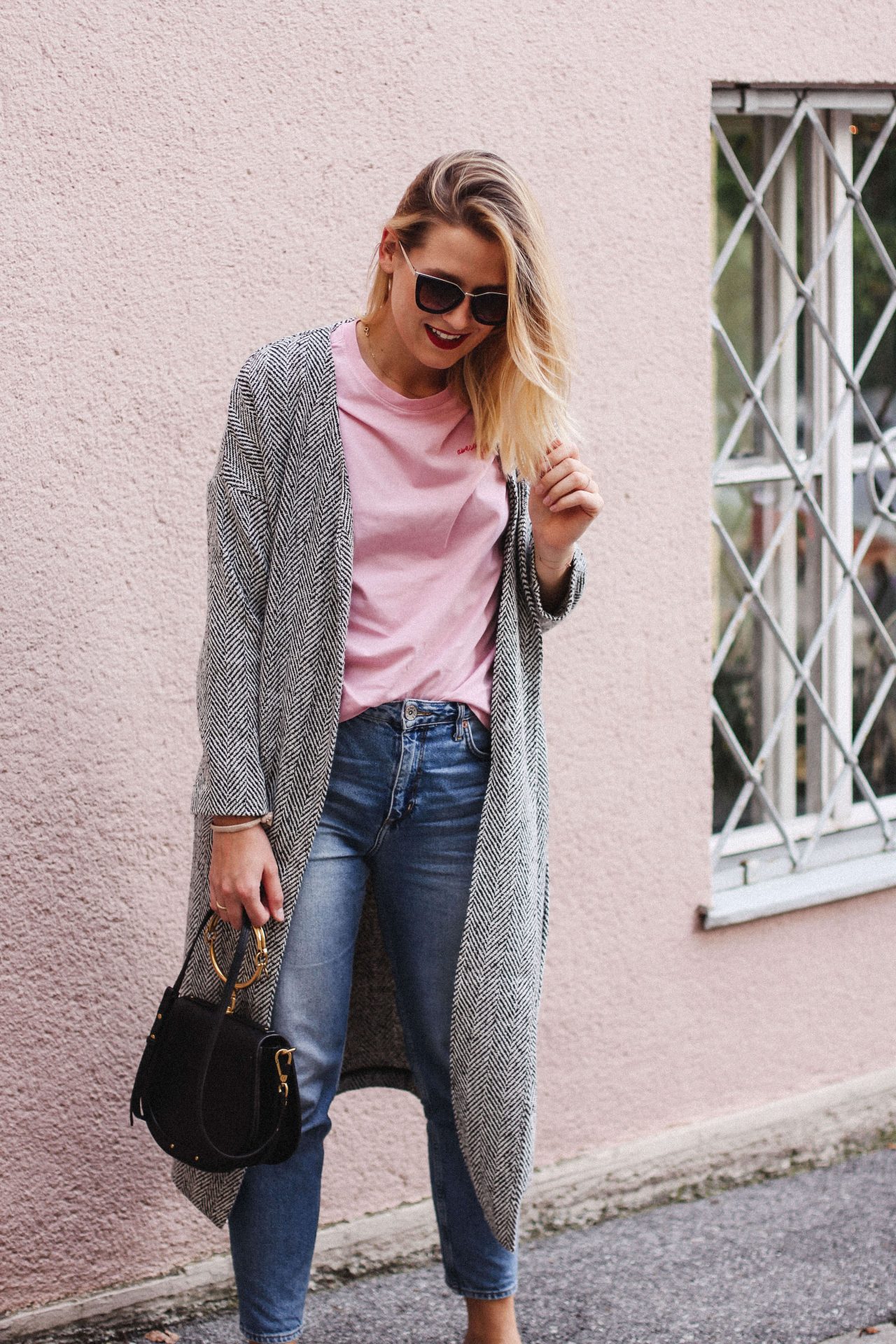
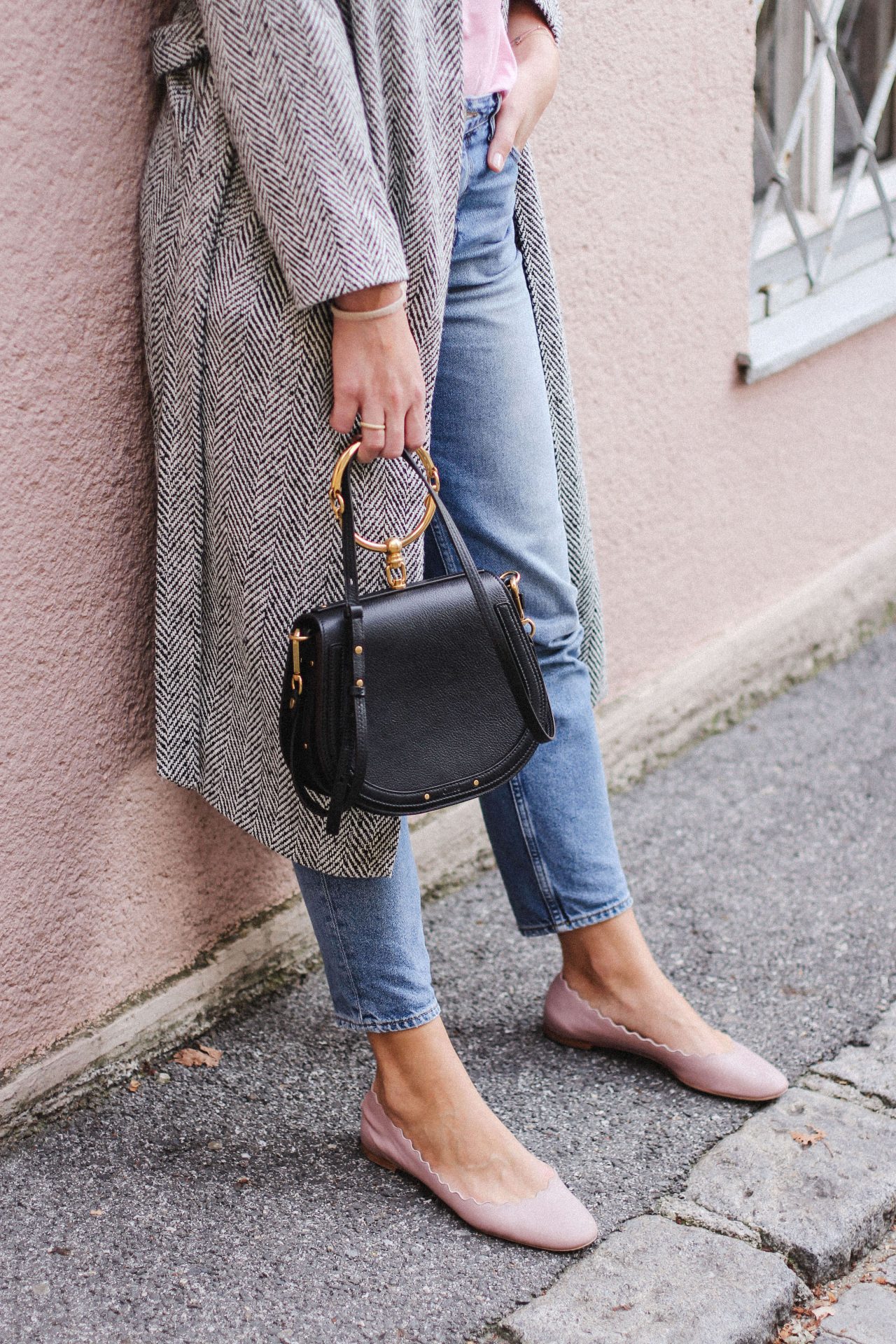


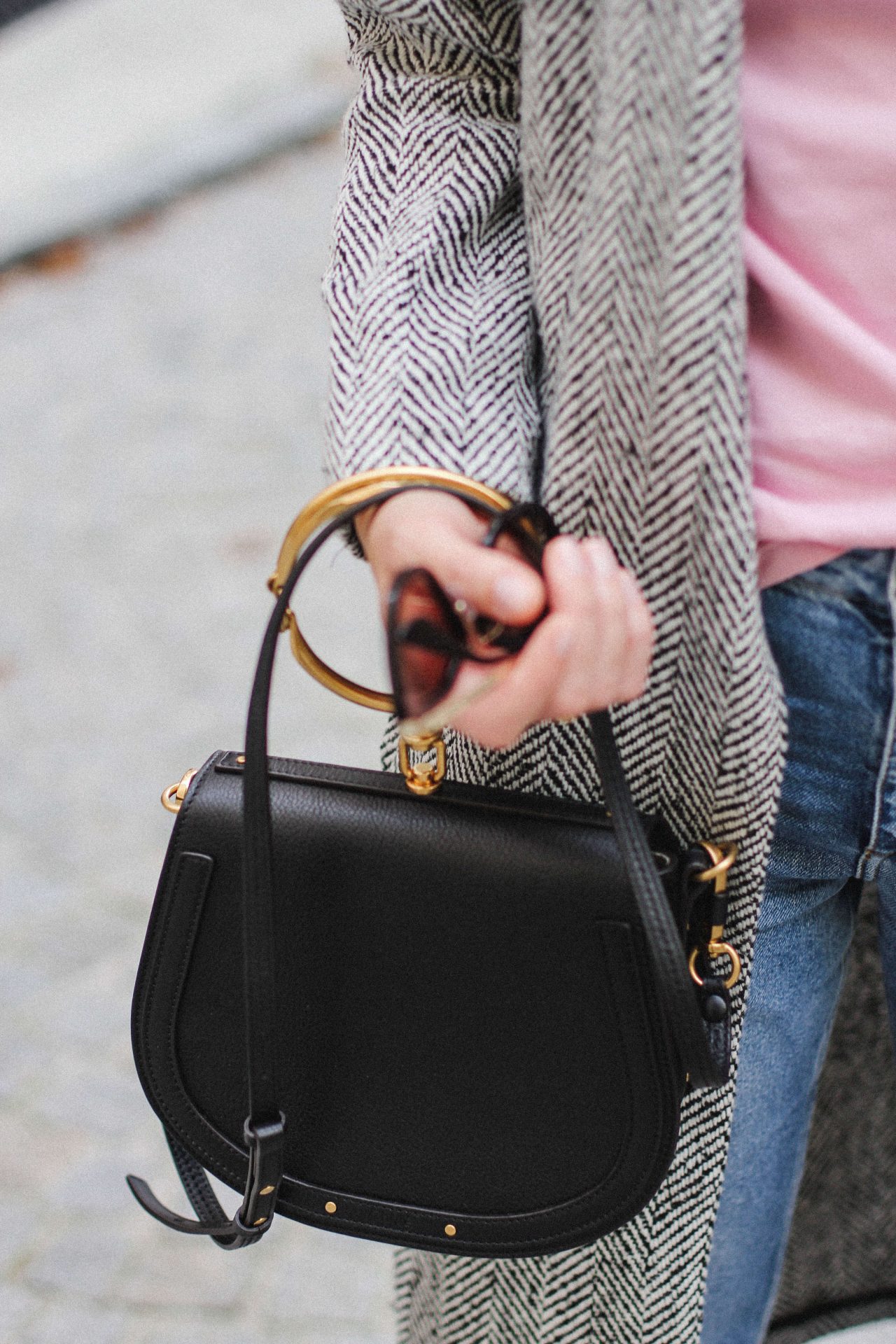

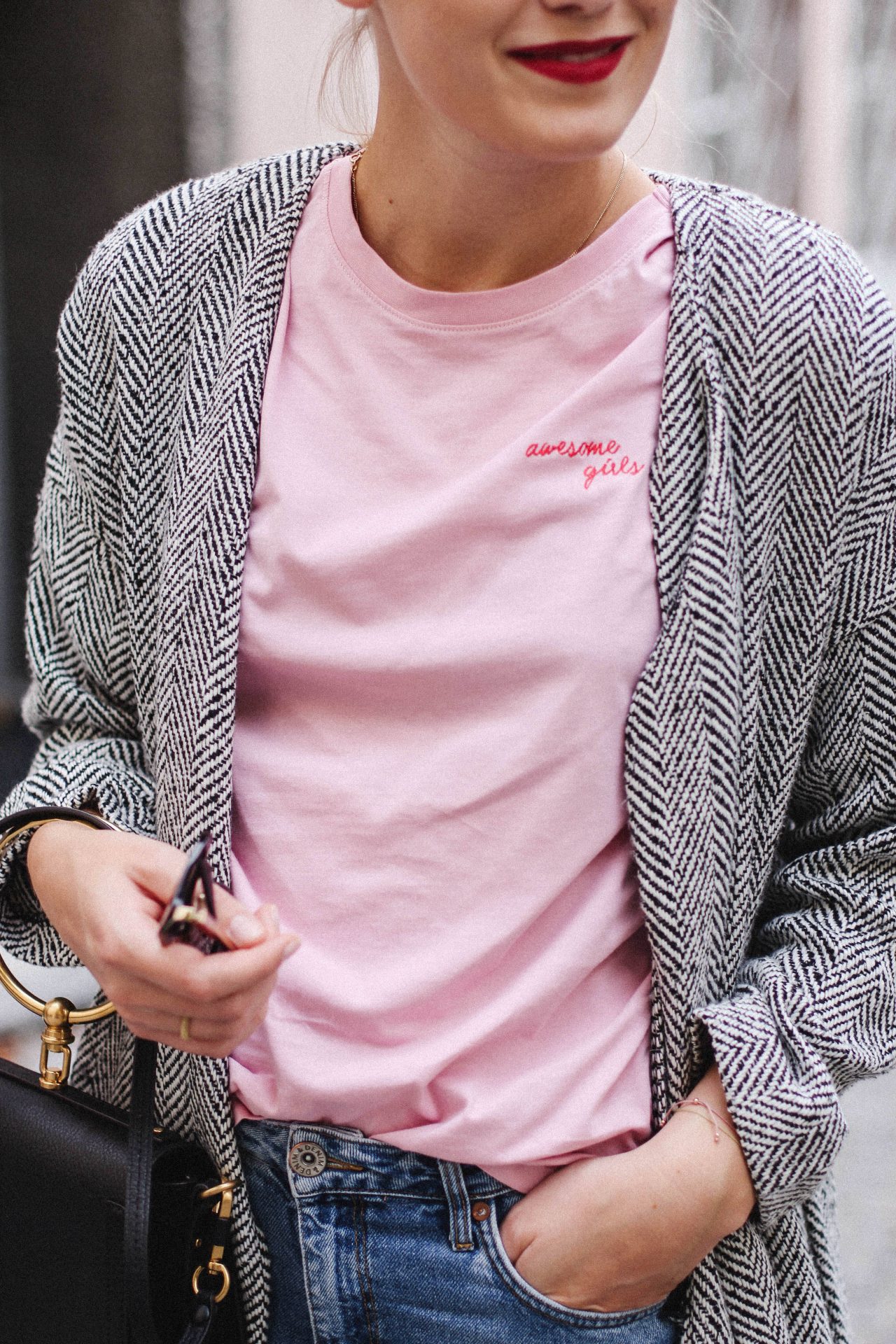
Shirt: Pieces | Coat: Vero Moda | Jeans: H&M | Ballerinas & bag: Chloé | Sunnies: Prada | Lipstick: L’Oréal x Balmain


